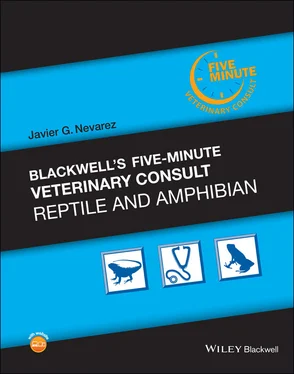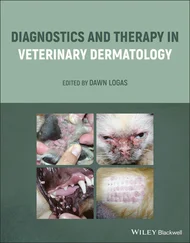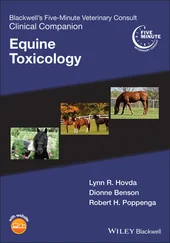Hyperglycemia has been documented in parasitic pancreatitis (Serpinema microcephalus).
It is speculated that endocrine pancreas disease may lead to insulin deficiency resulting in a diabetes mellitus‐like syndrome, but this has not been documented.
N/A
Unspecific
Possibly increased water consumption, increased urine (urate) production, and weight loss.
Largely unknown
Stress from handling or improper housing may predispose.
N/A
 DIAGNOSIS
DIAGNOSIS
Blood glucose levels above 200 mg/dl (11 mmol/l) indicate hyperglycemia.
N/A
Blood glucose measurements should be repeated, as a single elevated value is likely insignificant.
Persistent hyperglycemia is a more relevant finding.
Glucosuria should be evaluated to identify chronic hyperglycemia.
Underlying causes should be investigated: ovarian activity, neoplasia (particularly stomach and pancreas), metabolic disease.
The etiology for persistent hyperglycemia is unknown, but endocrine pancreas should be thoroughly evaluated.
 TREATMENT
TREATMENT
APPROPRIATE HEALTH CARE
N/A
N/A
CLIENT EDUCATION/HUSBANDRY RECOMMENDATIONS
N/A
 MEDICATIONS
MEDICATIONS
DRUG(S) OF CHOICE
In cases with persistent hyperglycemia, where systemic disease has been ruled out, experimental insulin treatment may be attempted.
Suggested starting dose: 1–5 iu q24–48h.
N/A
 FOLLOW‐UP
FOLLOW‐UP
PATIENT MONITORING
Follow up with repeated glucose measurements, and monitor general health of patient.
EXPECTED COURSE AND PROGNOSIS
Transient hyperglycemia is likely insignificant, while chronically elevated levels carry a poor prognosis.
 MISCELLANEOUS
MISCELLANEOUS
COMMENTS
N/A
N/A
N/A
Melissa Kaplan’s Herp Care Collection. Hypoglycemia and Hyperglycemia in Reptiles. http://www.anapsid.org/diabetes.html
1 Campbell TW. Clinical pathology. In: Mader DR, Divers SJ, eds. Current Therapy in Reptile Medicine and Surgery. St. Louis, MO: Elsevier Saunders; 2014:70–92.
2 Stahl SJ. Hyperglycemia in reptiles. In: Mader DR, ed. Reptile Medicine and Surgery. 2nd ed. St. Louis, MO: Elsevier Saunders; 2006:822–830.
AuthorMads F. Bertelsen, DVM, DVSc, DACZM, DECZM (Zoo Health Management)
Hypervitaminosis A
 BASICS
BASICS
DEFINITION/OVERVIEW
Hypervitaminosis A is well recognized health concern in chelonians. It can be caused by OTC supplements provided by well‐ meaning owners, parenteral overdosing by veterinarians, or diets with high animal vs. plant‐based (beta carotene) vitamin A levels.
In vertebrates, the vitamin A forms are trans‐retinyl esters, trans‐retinol, ‐retinal and ‐retinoic acid (99% of all vitamin A present in the body), while the major dietary provitamin A carotenoid is beta carotene.
The all‐trans‐vitamin A isomers are the only forms used physiologically.
The liver absorbs and stores preformed vitamin A; at a certain point, storage capacity is reached and toxicity occurs. Other storage sites include adipose tissue, lung, and kidney.
In humans, the retinoid delivery pathway to tissues involves primarily retinol bound to retinol‐binding protein; chylomicrons, very low density lipoprotein, low density lipoprotein, and albumin also provide transport.
Adverse effects in humans include increased bone turnover by suppressing osteoblast activity and stimulating osteoclast formation. This can lead to hypercalcemia, osteoporosis, pathologic fractures, altered skeletal development in children, and skeletal pain.
Vitamin A is fat soluble and high levels can affect metabolism of other fat‐soluble vitamins (D, E, K); with the effects on vitamin D contributing to the aforementioned bone pathology, although stimulation of bone resorption by vitamin A is reported independent of effects on vitamin D.
Vitamin A can have a toxic effect on mitochondrial function and is reported to cause hypothyroidism in mice.
First time owner of reptiles/species and young animals.
Owner using OTC vitamin A drops, OTC multivitamin with vitamin A in formulation other than beta carotene, using cod liver oil or feeding liver to a carnivorous/omnivorous animal.
Occasional issues with extruded diets with inadvertent toxic levels of non‐beta carotene vitamin A.
Patients present with vague signs such as anorexia, dehydration, lethargy.
Usually has a dermatological component including: dysecdysis, epidermal flakiness, ulceration, and sloughing.
Bilateral epiphora and periorbital edema may be noted.
Ulcerative stomatitis can be seen.
Secondary bacterial and fungal infections can occur.
Based on pathophysiology, suspect that metabolic bone disease may have interplay with hypervitaminosis A.
Juvenile animal
Reproductively active female
Liver disease
N/A
Iatrogenic dietary or parenteral over supplementation of non‐beta carotene vitamin A.
 DIAGNOSIS
DIAGNOSIS
DIFFERENTIAL DIAGNOSIS
Hypovitaminosis A
Infection
Hepatic or renal disease
UVB or thermal burns
Poor overall husbandry or diet
Improper conspecific arrangement
Metabolic bone disease
Liver biopsy for histopathology and testing vitamin A levels (need normal values for the species).
Читать дальше

 DIAGNOSIS
DIAGNOSIS TREATMENT
TREATMENT MEDICATIONS
MEDICATIONS FOLLOW‐UP
FOLLOW‐UP MISCELLANEOUS
MISCELLANEOUS BASICS
BASICS










